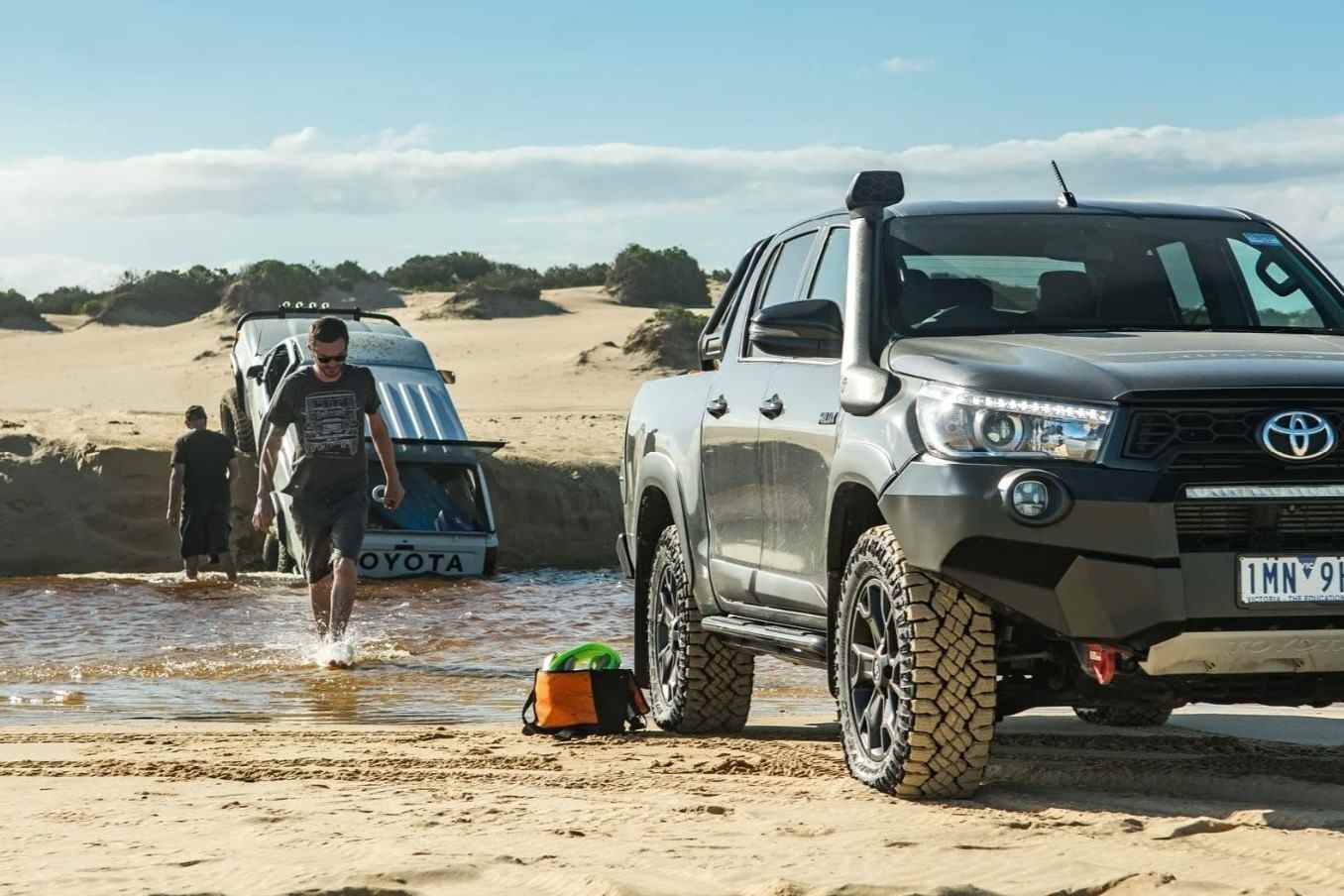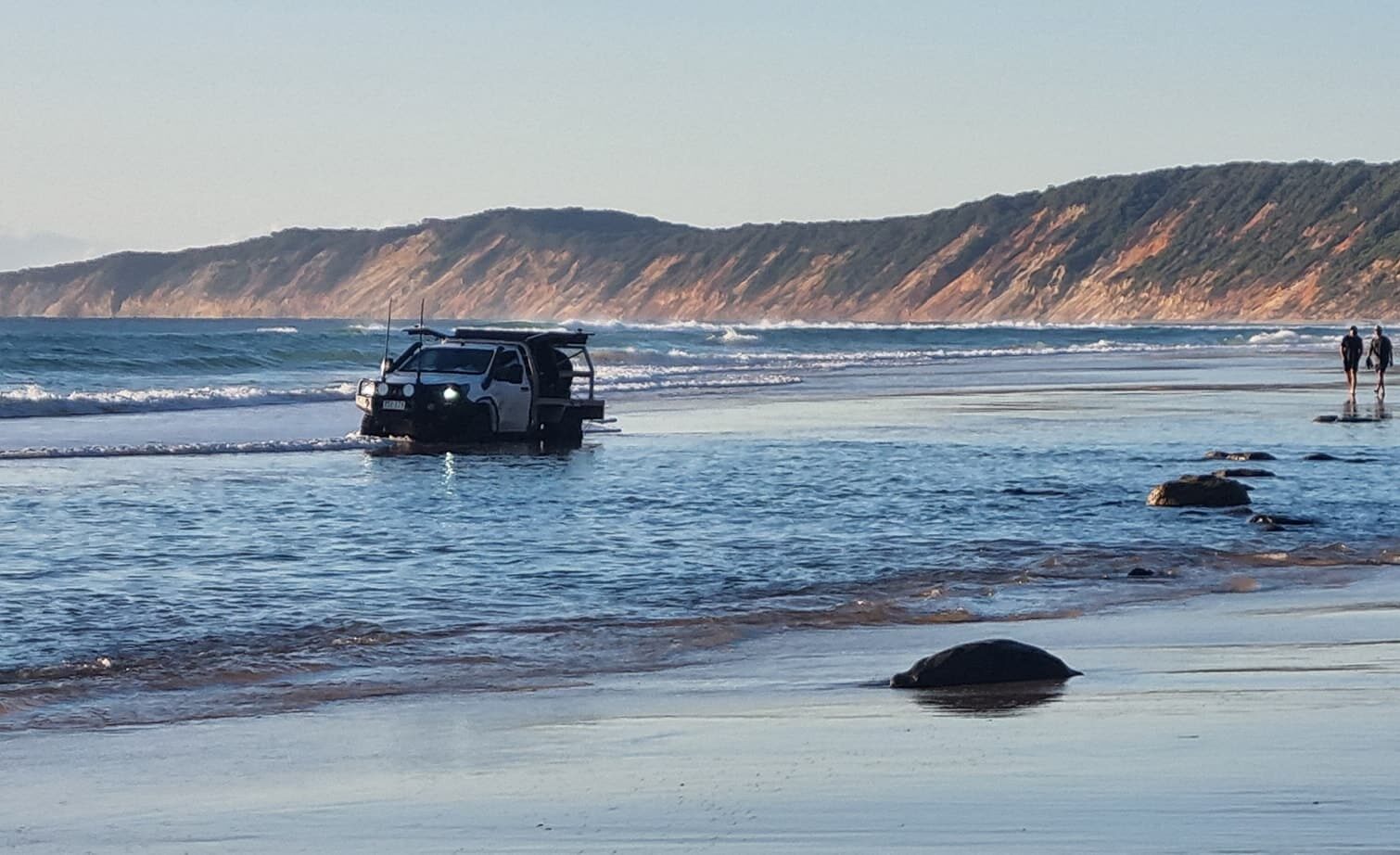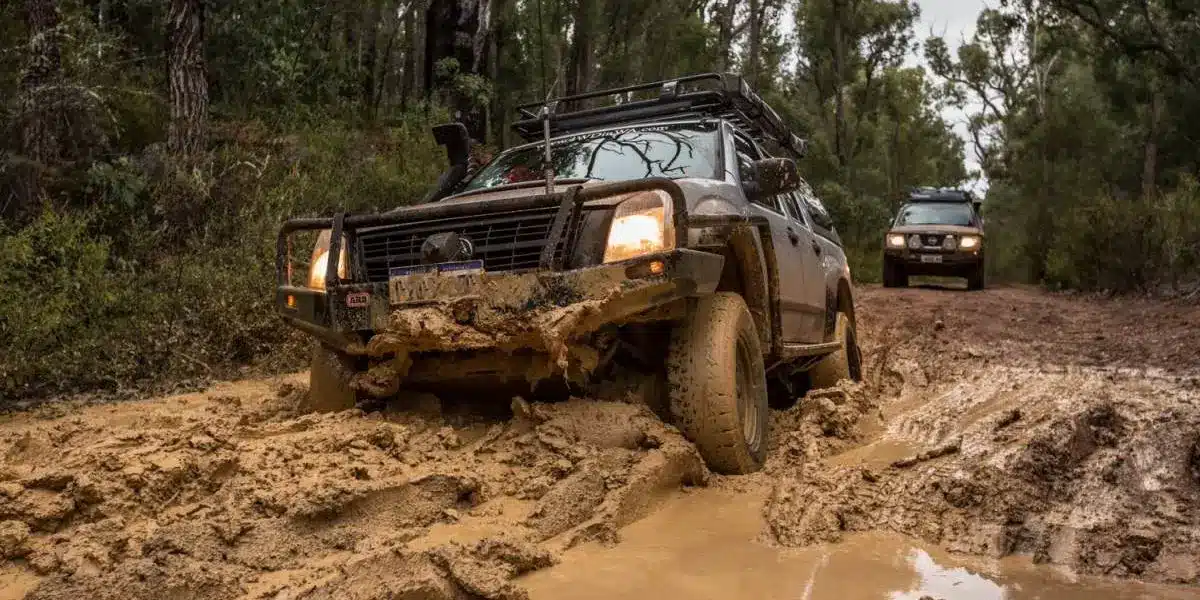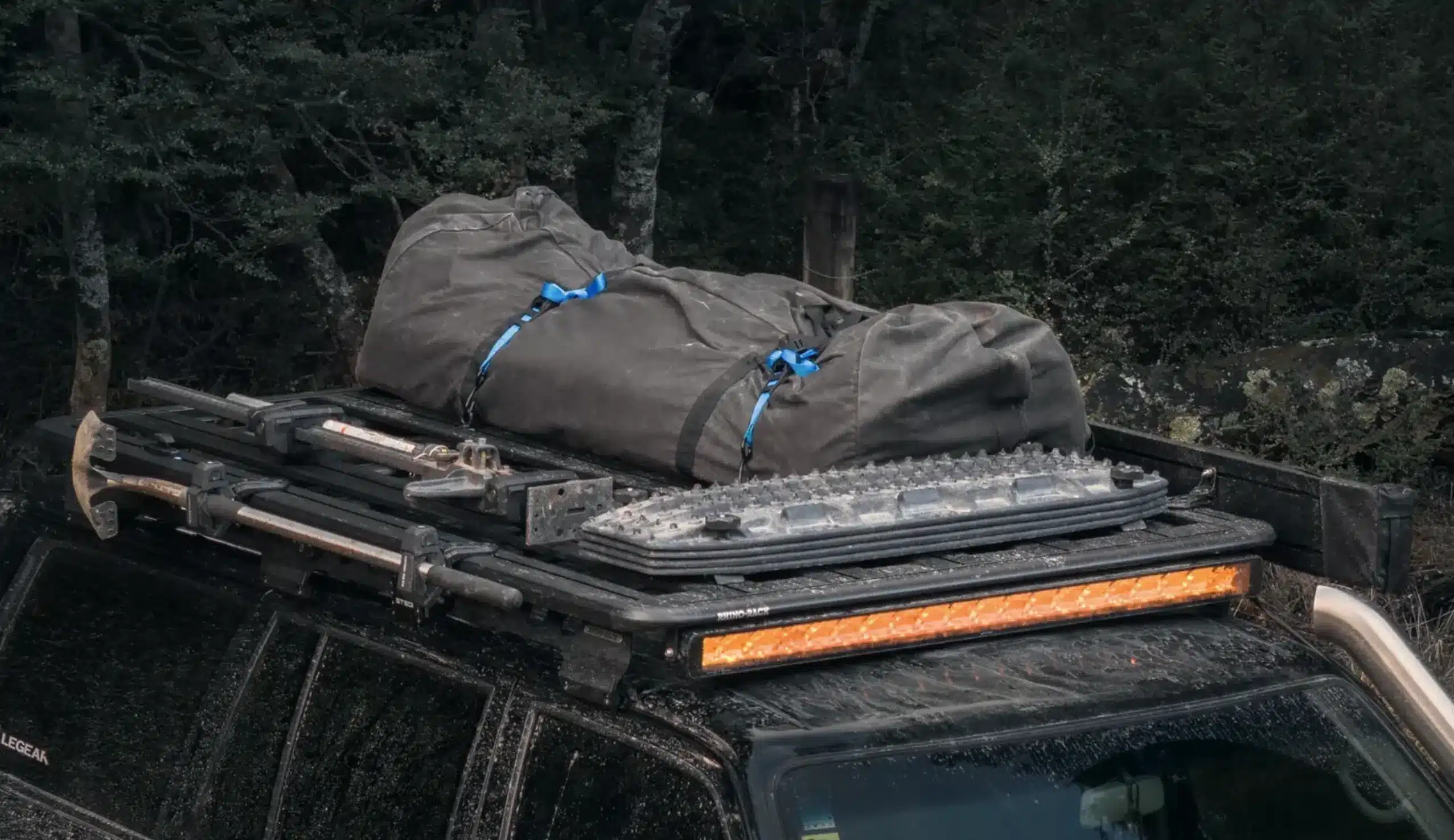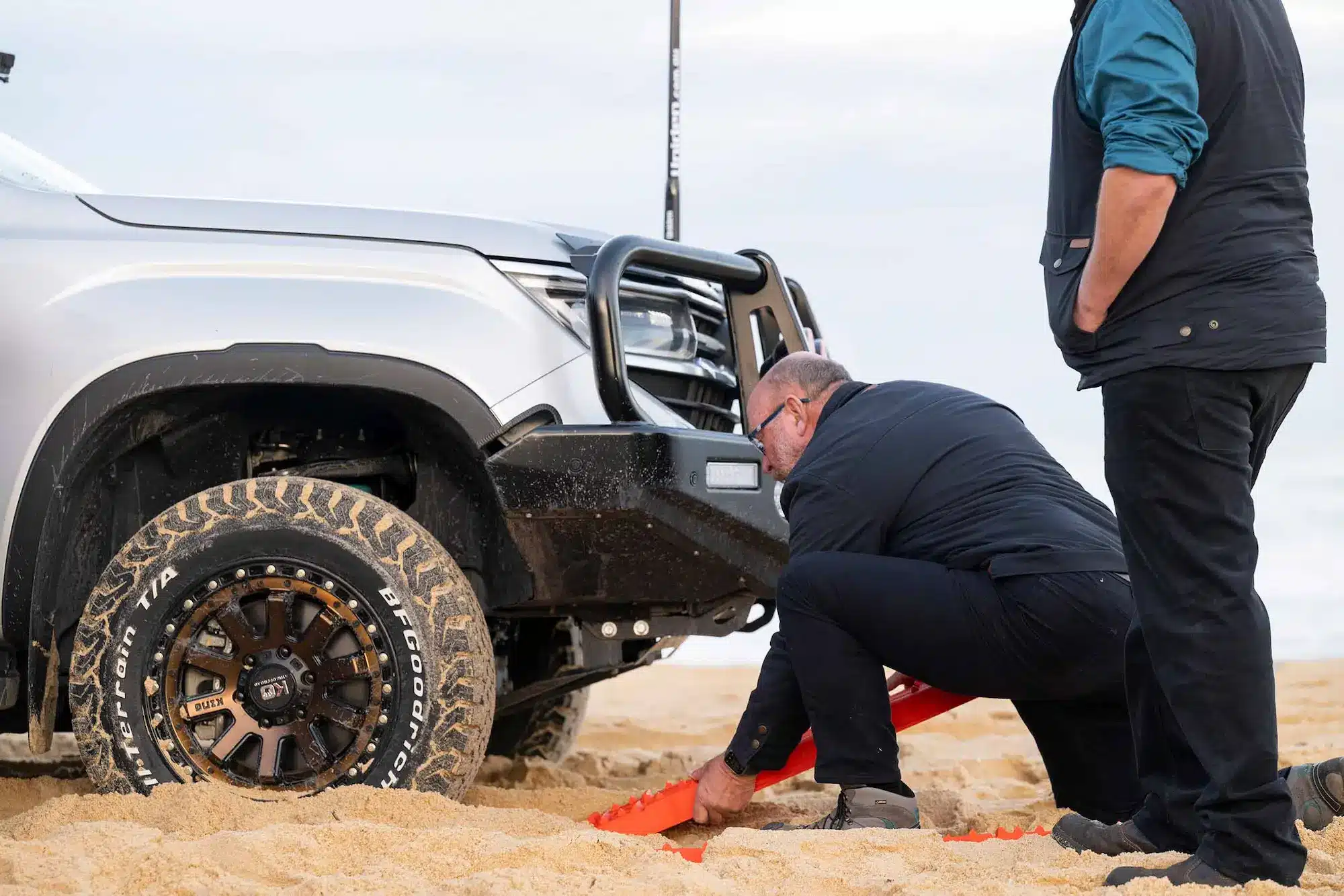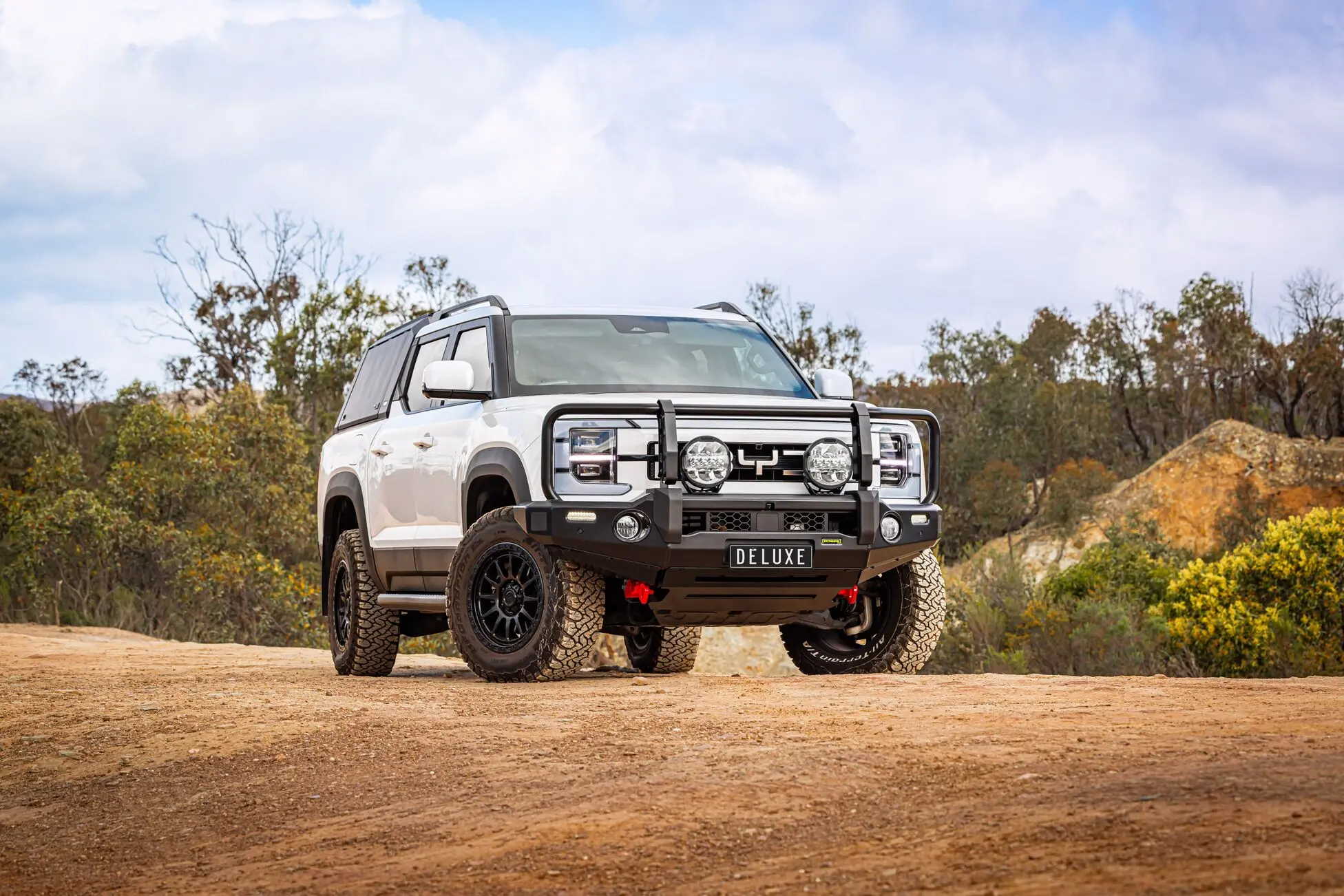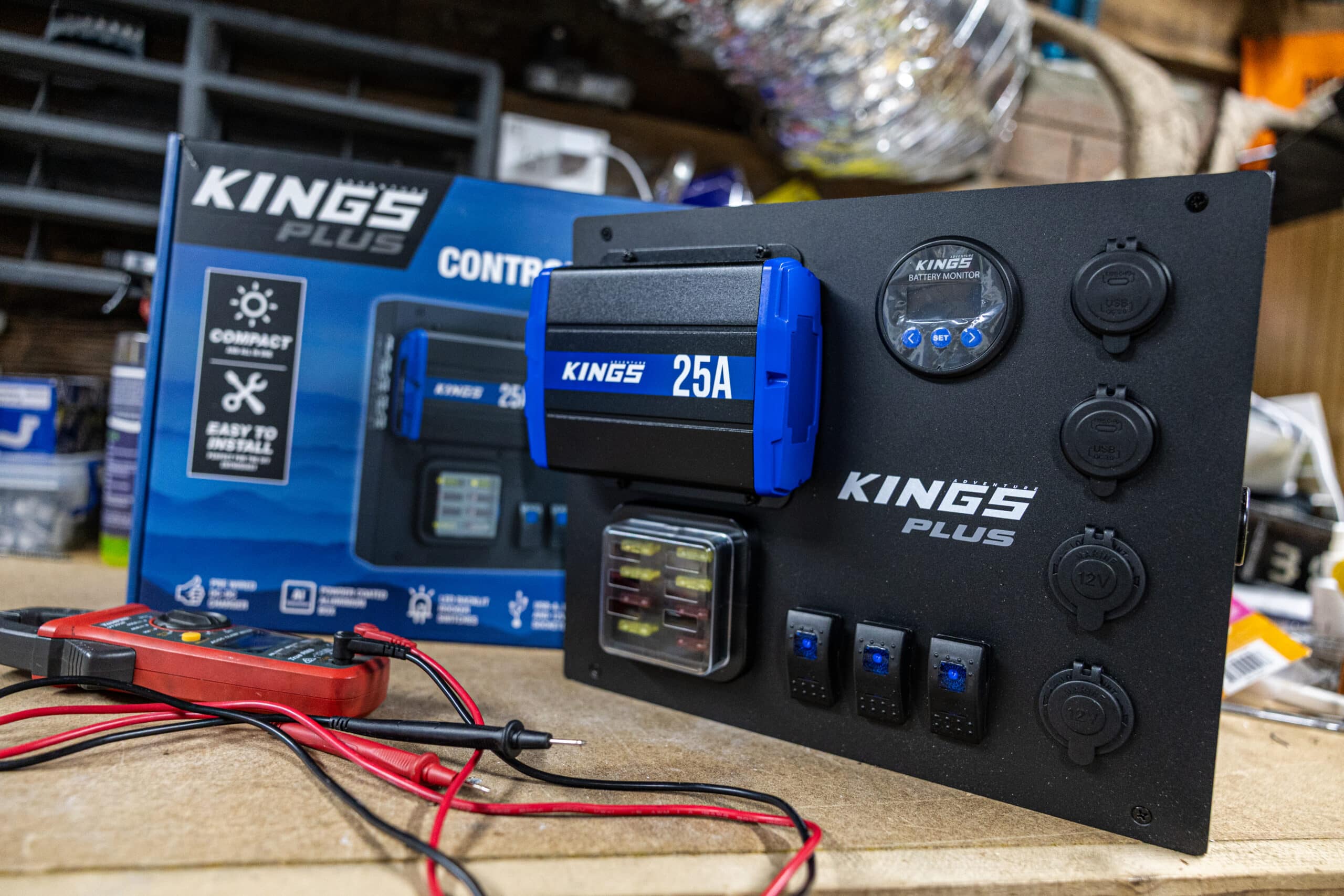Just starting out in 4X4 land? Or looking to ensure you’re carrying the right 4×4 recovery gear should things go pear-shaped? It’s easy to be overwhelmed by the sheer amount of kit that gets thrown in your face. It seems like every day, there are 10 new companies, all telling you why their latest invention is an absolute must-have. After all, does it really count as off-roading unless you’re using a carbon fibre winch thimble and machine-polished billet aluminium fairlead?
So what do you actually need to ensure you can get yourself out of strife, and what’s best left at home? Below we’ve got our essential guide to 4×4 recovery gear that’ll hopefully not only save your backside, but it’ll save you money too.
The 4×4 recovery gear you need
Long-handled shovel
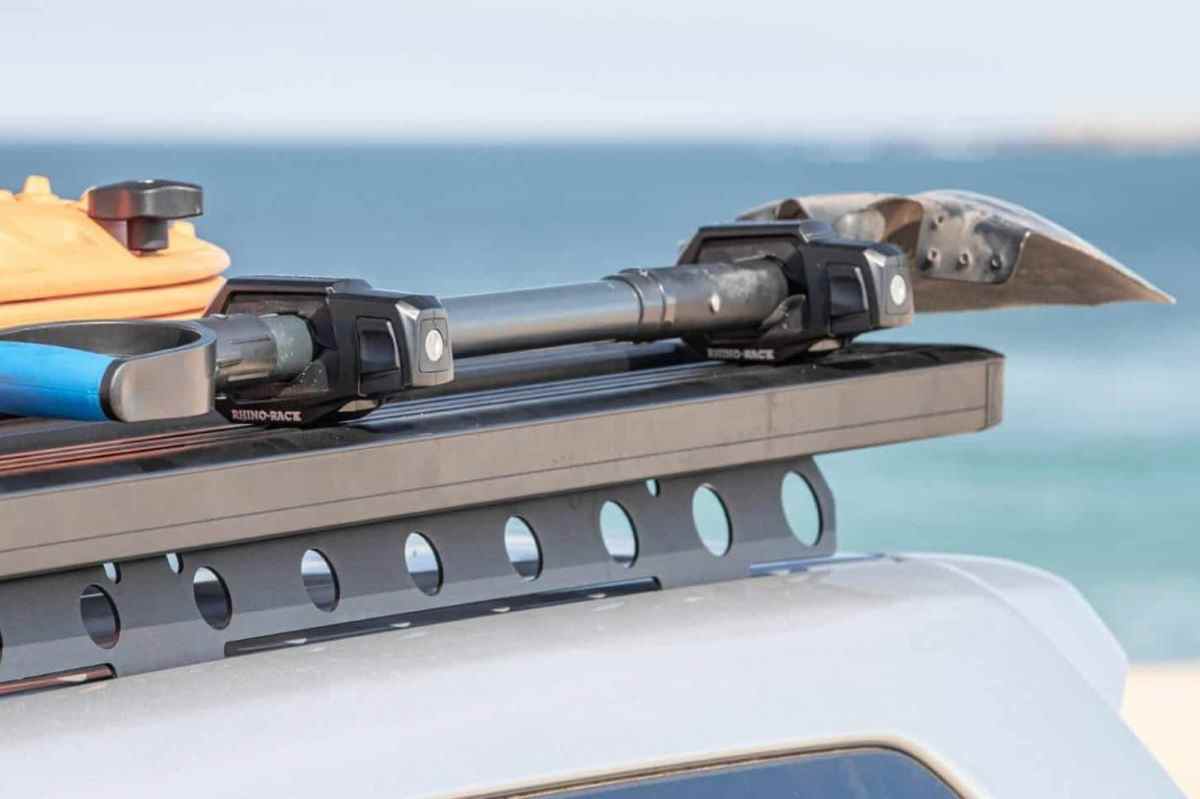
Why you need it
You’re not going to like this, but the overwhelming majority of sticky situations can be fixed by digging. It’s the most underrated bit of 4×4 recovery gear you’ll ever own. Whether it’s sand, mud, or rocks, in almost all situations, the thing holding you back is literally that. A physical barrier. By reaching for the trusty long-handled shovel, you’re able to clear obstacles that are fouling on your frame or diffs and build ramps to give your tyres an easier path to solid ground.
Brands to check out
You don’t need to spend big here, but steer clear of the timber-handled cheapies from the hardware store. It’ll live in or on your rig, so it needs to be lightweight and able to withstand the elements. Fiskars, Bahco and Rhino-Rack are a safe bet if you’re looking for longevity.
What you should pay
This is a simple tool with a simple price tag. $50-$70 will get you a shovel for life.
Recovery points

Why you need it
If you’re in deep enough that a quick shovel isn’t going to do the job, then you’re going to need some strong connections on your 4X4 via jacking and recovery points. It can be tempting to sling a tow strap around a cross member on your chassis. A suspension point. Or heaven forbid, your tow-ball. But all of those can lead to serious damage to your rig, and your face if something should fail.
A set of rated recovery points are not only cheap insurance, they’re an essential piece of 4×4 recovery gear. If you’re on a budget, a single hitch-mounted point is a cheap option.
Brands to check out
This is one area where you’ll want to buy once, so stick to the known brands. Companies like ARB, Roadsafe, and Drivetech4x4 all have well-engineered solutions.
What you should pay
Expect to pay $200-$500 to ensure you’re getting quality 4×4 recovery gear.
Recovery kit
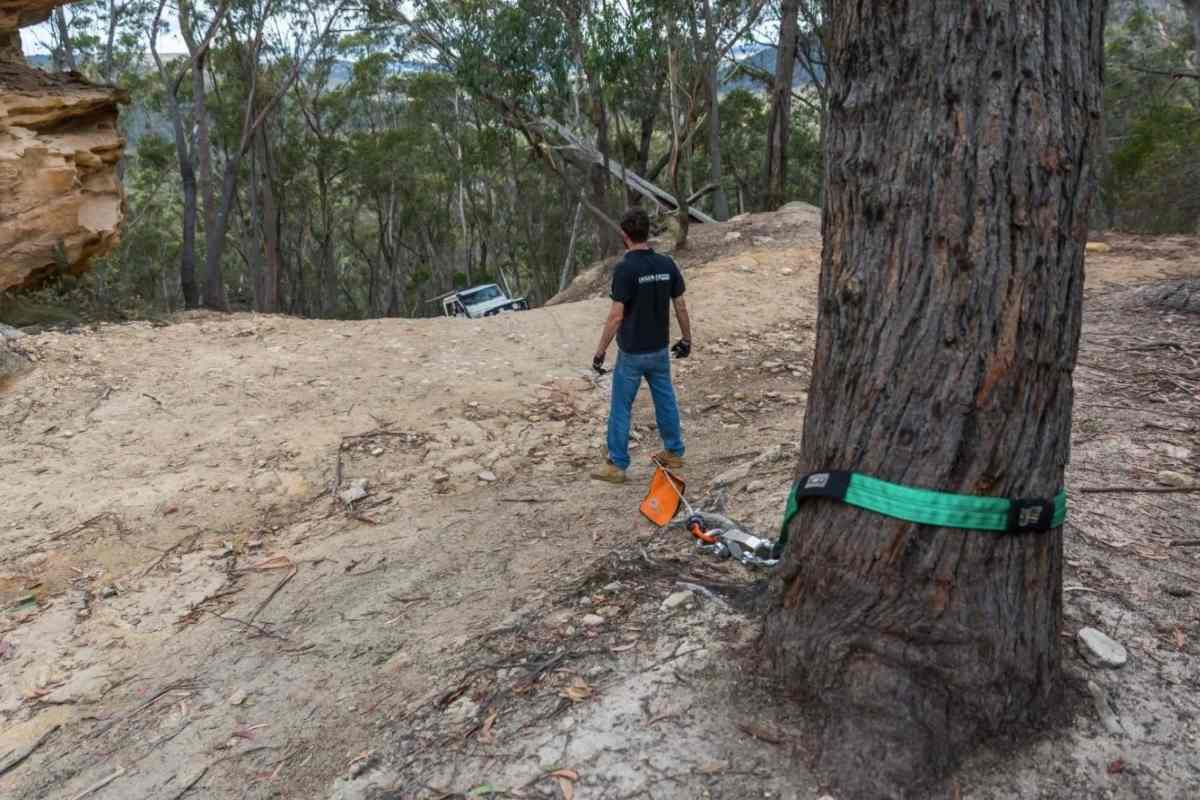
Why you need it
All those 4×4 recovery points aren’t going to do you any good if you’ve got no gear to connect to them, so you’ll need to eye off a decent recovery kit. You get what you pay for in this regard. Not always in terms of quality, any decent kit will be rated. But the fancier the price tag, the fancier the kit.
High-end 4×4 recovery kits will replace metal bow shackles for safer rope versions, heavy snatch straps for lighter recovery ropes, and heavy snatch blocks with space-age recovery rings. They’ll all do the same job, it’s just how long you want it to last and what features you’re looking for.
Brands to check out
It’s hard to go past Maxtrax and Saber on the high end, while ARB and BushRanger have quality kit for more affordable prices.
What you should pay
There’s a wide variety in the quality and features of recovery kits. Budget $150-300 on the low end. And up to $1000 if you want the cream of the crop.
12V winch
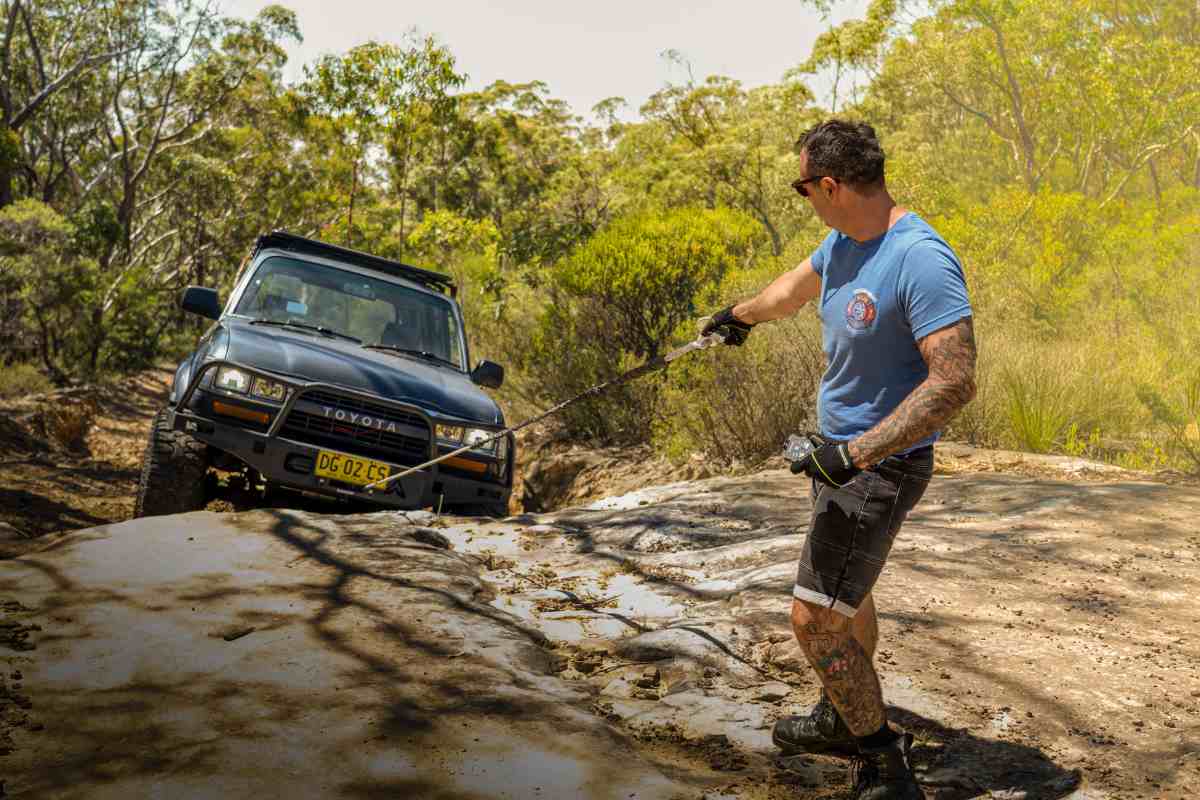
Why you need it
Big tyres and diff locks will get you further, but they’ll rarely help you once you’re stuck. The 12V winch has earned itself a reputation as the get out of jail free card of 4×4 recovery gear for good reason. Over the years, we’ve used them for everything from self-recovery in mud, to stopping 4X4s from rolling in the rocks. They’re handy for yanking firewood into camp right through to home renovations. Put simply, if you don’t have one, you’re dependent on someone else to help you.
Brands to check out
For old-school simplicity or people who like to modify their gear, the faithful Warn High-Mount is always a fan favourite. However, we recently installed and tested out the new Bushranger REVO MKII winch and were suitably impressed in terms of bang-for-buck.
What you should pay
$1000-$1800 will see with a quality modern winch. Any less than that and you’re typically rolling the dice on quality. More and you’re looking at very fancy kit based on features rather than value for money.
High-lift jack

Why you need it
An electric winch is a monumental force multiplier, allowing the push of a button to move tonnes of 4X4 with ease. But they only work in one direction. A high-lift jack is an underrated piece of 4×4 recovery gear that will apply over 2000kg of force in any direction you point it. If you need to lift your 4X4 out of a hole to pack it with rocks. Shift it sideways onto a better line. Or even jerry rig up a hand winch in a pinch, the high-lift is a jack of all trades. We’ve even used them to clean tyre beads and swap uni-joints track-side.
Brands to check out
It’s hard to go past the original Hi-Lift jack brand. They’ve got rebuild kits and will last for literal decades if treated well. Some companies, such as ARB and Fox, offer hydraulic versions that are safer but give up some functionality.
What you should pay
Upwards of $150 for a high-lift jack, up to $1400 for a fancy hydraulic ARB offering.
Compressor
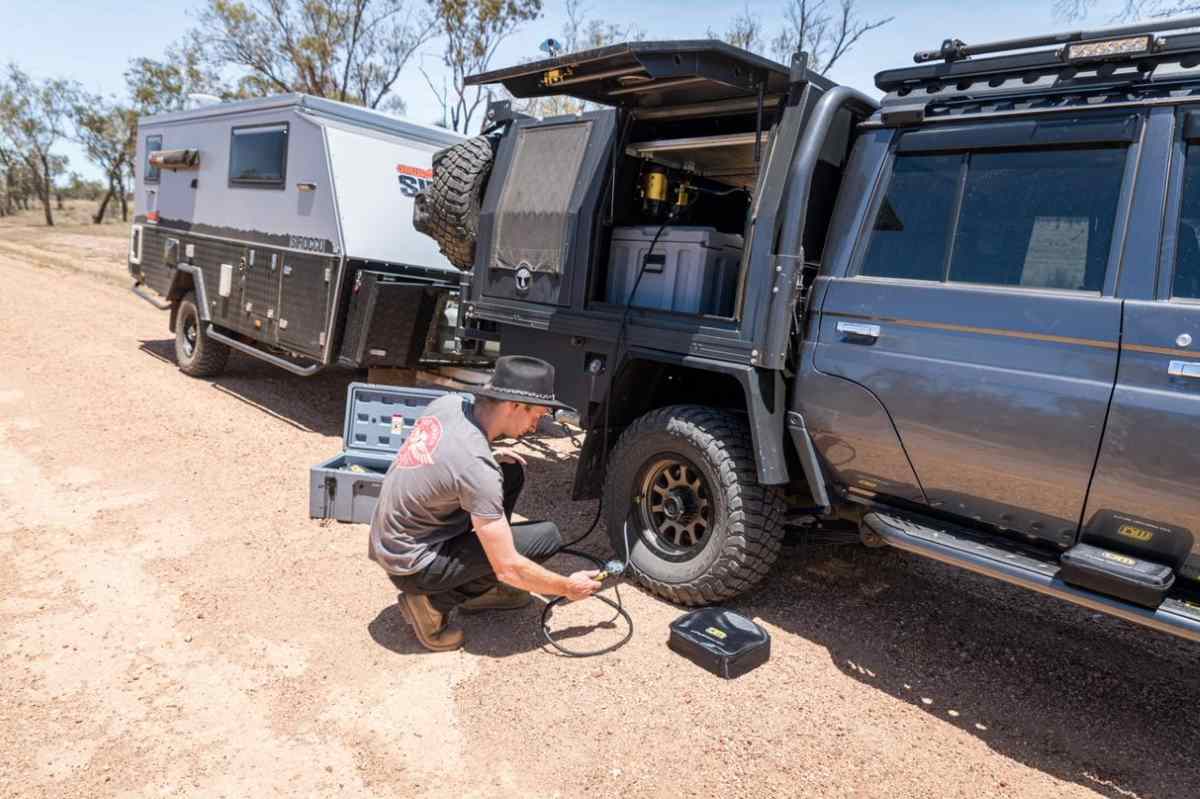
Why you need it
One of the most common problems you’ll find yourself in when stuck is a rolled tyre off the bead. Whether it’s from bouncing against a tree root, or pressures too low, when they roll off you’re almost always dead in the water. If you’re in a bind, you can pinch air from another tyre with a patch lead, but a dedicated 12V air compressor is a far more reliable solution to help you fix that flat or reseat the bead with minimal fuss. This bit of 4×4 recovery gear will also save your lining up at the servo after a day on the sand.
Brands to check out
This market used to be far more saturated, but lately, budget compressors have all started looking remarkably similar. Regardless, anything from a decent brand will typically perform well.
What you should pay
Expect to pay $200-$400 for a decent entry-level compressor, up to the north end of $1300 for a high-end ARB twin-piston kit.
Traction boards

Why you need it
You’re very rarely in need of 4×4 recovery gear because your entire driveline has blown up. It’s typically far less serious than that, and just an issue of your spinning tyres not getting enough traction to move you forward. Sounds simple, and so is the solution traction boards offer. By shoving one of these bad boys under your tyre, you’re giving yourself significantly more traction. Hopefully enough to free yourself.
They can also be used as a ramp up and over steep steps. A bridge over holes. And even as a raised platform to level your 4X4 out if you’re sleeping in a rooftop tent. Like a high-lift jack, if you just go by what’s on the box their use is limited, but if you get creative they’re an unbelievably versatile bit of kit.
Brands to check out
Maxtrax, Treds, and Exitrax in that order are the brands with the most experience in the game. There’s plenty of cheap alternatives that’ll fold in half at the first sign of trouble.
What you should pay
You can expect to pay $200-$300 for any of the quality brands.
Head torch and rain coat
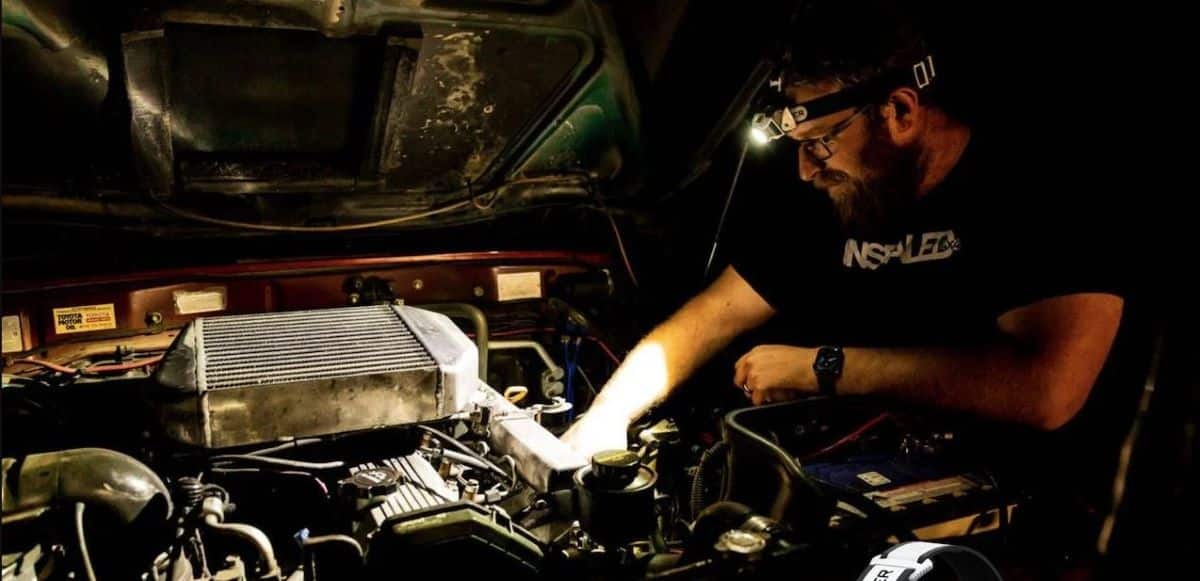
Why you need it
You’re loading your 4X4 up permanently with recovery gear that’ll help you when things go pear-shaped, but don’t forget these two simple items. If you’ve ever tried changing a flat tyre by the light of your phone torch, you’d know a simple head torch or two shoved in the back of the glovebox can be an absolute lifesaver. Likewise, a simple raincoat under the front seat can make all the difference if you’re caught out in bad weather.
Brands to check out
Many brands will have their own head torches but O-Light and Black Diamond build some of the best you can get. On the raincoat front, the camo may be a little over the top, but military surplus raincoats pack flat and last forever, making them perfect for the job.
What you should pay
You don’t need to spend the earth here. A $50 head torch and $100 rain coat will last you forever. Or a $5 head torch and $20 rain coat will get you out of strife.
What 4×4 recovery gear you can leave at home
Hand winch
Actually, on second thought, don’t leave this at home. Leave this bit of 4×4 recovery gear in 1987 where it belongs. They’re heavy, cumbersome, sketchy as hell to use, and will leave you a ball of sweat by the time you’re unstuck. Sure, they’re cheap, but so are second-hand 12V winches these days.
Folding shovel
Folding shovels are really convenient; they’re lightweight and pack anywhere. In fact, the only thing that sucks about them is trying to use them. If your 4X4 needs you to dig to get it out, a small, flimsy shovel is about the worst tool you can do it with. Leave this bit of 4×4 recovery gear at home and bring a proper shovel.
Ground anchor
If you’re racing the Outback Challenge or crossing the desert solo, feel free to ignore this. For everyone else, there’s a reason these have fallen out of favour. They weigh an absolute tonne. They’re huge. And unless there are no trees or other vehicles within 60 metres, they’re the worst option available.
Exhaust jack
Another piece of 4×4 recovery gear with a very limited use case. Again, if you are solo on soft terrain, you may be able to justify losing a large amount of your storage space to this niche bit of kit. For everyone else, save your money to shout your mates a round of beers after they get you unstuck.
This article contains affiliate links to products. We may receive a commission for purchases made through these links.

